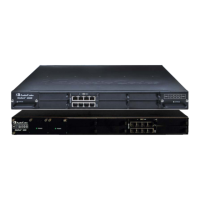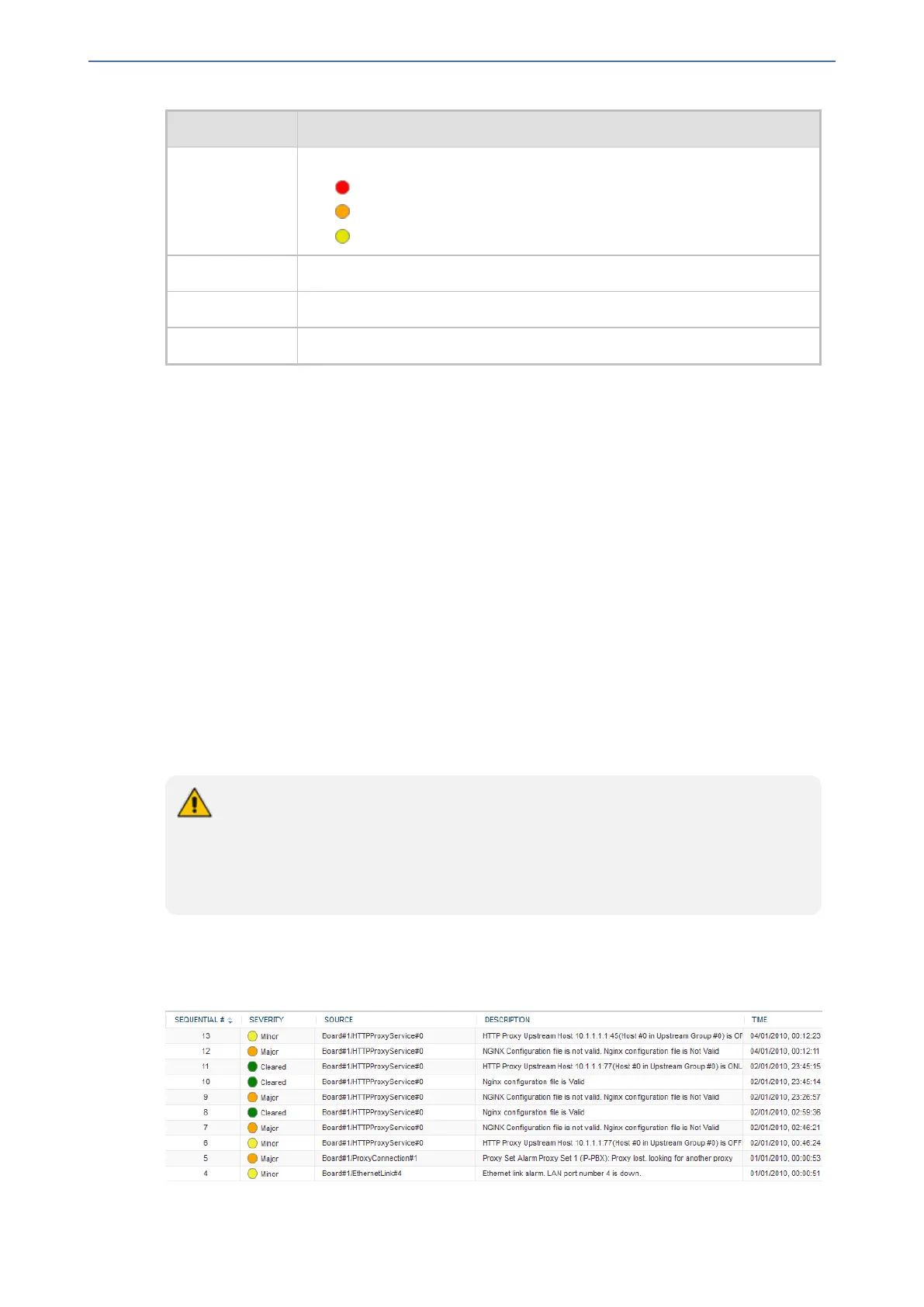CHAPTER45 Viewing Carrier-Grade Alarms
Mediant 4000 SBC | User's Manual
Field Description
Severity Severity level of the alarm:
■ Critical (red)
■ Major (orange)
■ Minor (yellow)
Source Component of the device from which the alarm was raised.
Description Brief description of the alarm.
Date Date (DD/MM/YYYY) and time (HH:MM:SS) the alarm was raised.
Viewing History Alarms
You can view all SNMP alarms, in the Web interface's Alarms History table, that have been raised
(active alarms) as well as cleared (resolved). One of the benefits of this is that you can view alarms
that may have been raised and then cleared on a continuous basis. For example, such an alarm
may be raised due to an Ethernet cable that is not securely attached to the device's Ethernet port,
causing the Ethernet link to be sometimes up and sometimes down. This alarm would not be listed
in the Active Alarms table due to it being cleared.
The alarms in the table are displayed from newest to oldest. In other words, the most recently
raised alarm is shown first in the list. The table displays both the cleared alarm and the alarm for
which it was cleared adjacent to one another, as shown in the figure below for alarms #8 and #9.
To configure the maximum number of alarms that can be displayed in the table, use the
AlarmHistoryTableMaxSize ini file parameter. If the maximum is reached and a new alarm is added
to the table, the oldest alarm is removed from the table to accommodate the new alarm.
If the device is in High Availability (HA) mode, the table also displays alarms raised by the
Redundant device. These alarms are shown in the 'Source' field with the alarm source varbind
prefix, "Redundant" (e.g., "Redundant#1/EthernetLink#7"). Alarms raised by the Active device are
shown without this source varbind prefix (e.g., Board#1/EthernetLink#7).
● The alarms in the table are deleted upon a device reset.
● If the device is in HA mode, the Redundant device's alarms in the table are deleted
upon an HA switchover or if the device changes from HA to a Standalone device.
● For more information on SNMP alarms, refer to the SNMP Reference Guide
document.
➢ To view history alarms:
■ Open the Alarms History table (Monitor menu > Monitor tab > Summary folder > Alarms
History).
- 734 -

